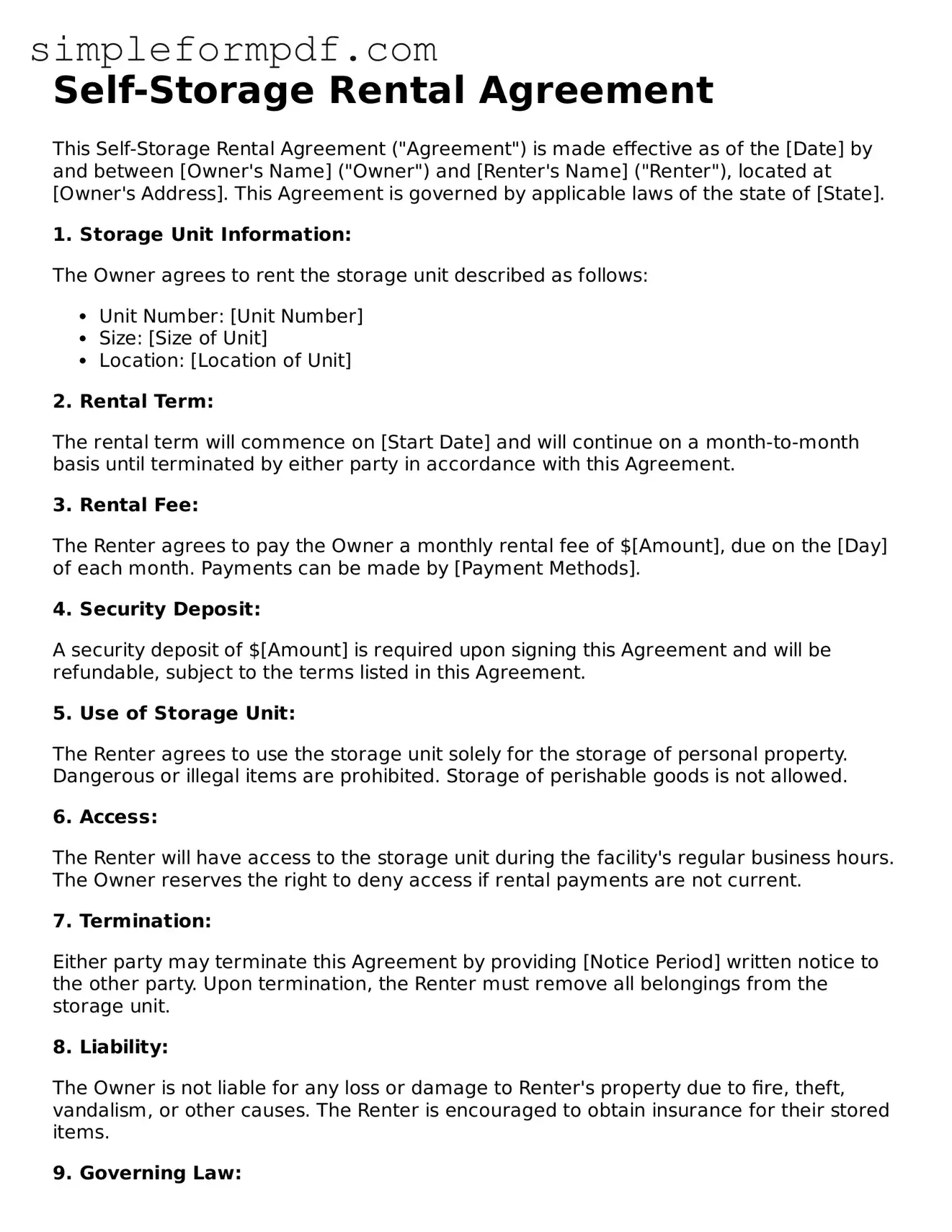Self-Storage Rental Agreement
This Self-Storage Rental Agreement ("Agreement") is made effective as of the [Date] by and between [Owner's Name] ("Owner") and [Renter's Name] ("Renter"), located at [Owner's Address]. This Agreement is governed by applicable laws of the state of [State].
1. Storage Unit Information:
The Owner agrees to rent the storage unit described as follows:
- Unit Number: [Unit Number]
- Size: [Size of Unit]
- Location: [Location of Unit]
2. Rental Term:
The rental term will commence on [Start Date] and will continue on a month-to-month basis until terminated by either party in accordance with this Agreement.
3. Rental Fee:
The Renter agrees to pay the Owner a monthly rental fee of $[Amount], due on the [Day] of each month. Payments can be made by [Payment Methods].
4. Security Deposit:
A security deposit of $[Amount] is required upon signing this Agreement and will be refundable, subject to the terms listed in this Agreement.
5. Use of Storage Unit:
The Renter agrees to use the storage unit solely for the storage of personal property. Dangerous or illegal items are prohibited. Storage of perishable goods is not allowed.
6. Access:
The Renter will have access to the storage unit during the facility's regular business hours. The Owner reserves the right to deny access if rental payments are not current.
7. Termination:
Either party may terminate this Agreement by providing [Notice Period] written notice to the other party. Upon termination, the Renter must remove all belongings from the storage unit.
8. Liability:
The Owner is not liable for any loss or damage to Renter's property due to fire, theft, vandalism, or other causes. The Renter is encouraged to obtain insurance for their stored items.
9. Governing Law:
This Agreement will be governed by the laws of the state of [State].
10. Signatures:
By signing below, both parties agree to the terms of this Self-Storage Rental Agreement.
______________________________
[Owner's Name]
Owner
______________________________
[Renter's Name]
Renter
Date: ________________________
